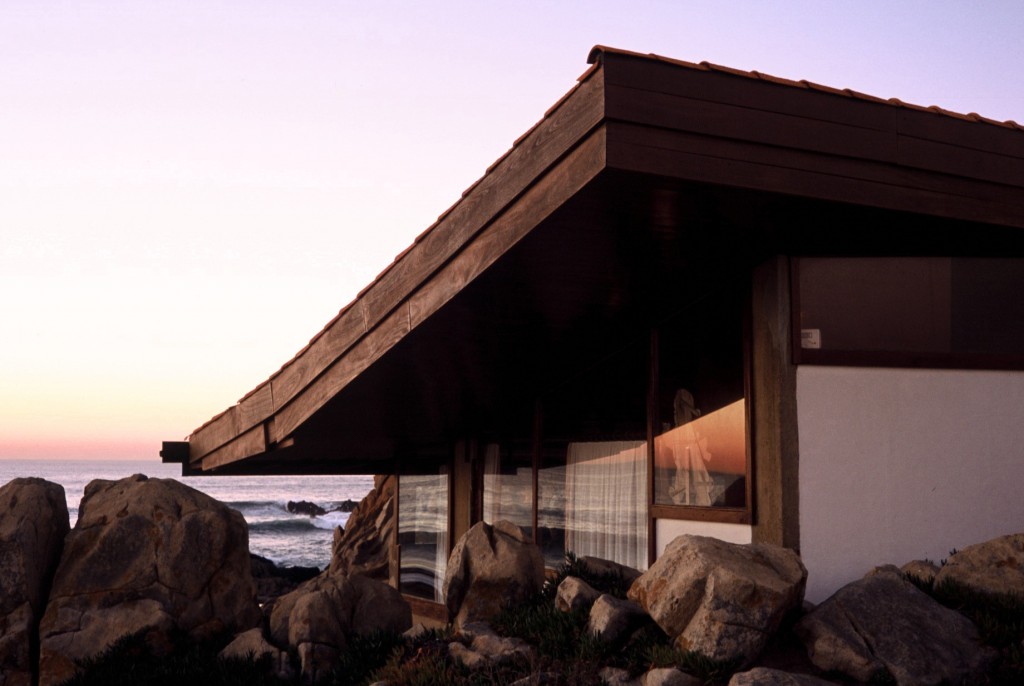Via alvarosizavieira.com
An Interview: Álvaro Siza
[Leah Kreger. Boa Nova, March 6, 1999]
Drawing
Who introduced you to drawing?
In primary school, we learned to draw in a very special way. I remember that all the students, at six years of age or so, were taught to draw such things as a closed box, then an open box.
Every child likes to take a pencil to make a mark. Everybody makes beautiful things when they are three, four, or five years old. Most people lose that spontaneity; I think that always happens. Some are able to win a second spontaneity. In the school, though, we were taught an opposite way to draw: to make geometric things or to make a copy of something, such as flowers. My mother helped us. She was not very good at drawing, but she helped us learn to write or read at home. I think I was a little more able to do those schematic things than my brothers.
… I had an uncle living in the house too; he was not married. He encouraged my ability to make drawings. Almost every day after dinner, which I remember very well, he took me and gave me a paper and a pencil and encouraged me to draw. He taught me to make a horse. He was not very good; he was absolutely unable to design, so he designed a very naive horse.
What was your uncle’s name?
Joaquim. He was also my father-in law. My name, also has Joaquim: Alvaro .. Joaquim. Alvaro is the name of my father. Joaquim is the name of my uncle and father-in-law. … So I began learning to make those drawings.
Catalonia
You began going to Catalonia in 1943.
My father went every year for one month. He rented a car with a driver, a big car, an American car. The family went with mother, my brothers, and sometimes my uncle Joaquim.
… With maps and books we organized the trip. We got information. I think the organizing was much more important than the trip itself! When we were studying things to see in Barcelona, I saw some photos of Gaudí buildings in a small book. They seemed to me to be sculpture.
… When I first I arrived in Barcelona, I went with one of my brothers to see Gaudí. It was evening, and I went with him to see the Sagrada Familia. It was very impressive. Barcelona was rather different than it is today; the atmosphere in the whole of Catalonia and Spain is different. It was night, with nobody in the streets, and we went there. It was dark, and I saw the Sagrada Familia! I was afraid because the atmosphere was so frightening!
…The next day or so, we saw Gaudí’s Casa Milà. I observed that sculpture had exactly the same elements as any house: doors and locks and everything as a normal house. It impressed me very much, how those normal things I knew in my house could be put together to make a different thing. That was the first time I was really was impressed by architecture. I could like my house or the others, but not in a special way, not with an aesthetic point of view.
Boa Nova Tea House Project
[The design for this restaurant] was a competition. You know the story. I was working with Tavora, and at the time to make the competition he made a trip around the world. He told us, the five collaborators, ‘I cannot do it, but you can make it’. The project entry presented the name of Tavora.
…We won the competition. Then we began to do the construction drawings. Tavora declared to us that since he had not made it, we had to make it. At that time it was possible. We worked one year and I was not happy at all because the project was bad. It was in two volumes. This [Tea Room] was elevated and the other [Dining Room] was lower. It was bad, but we had already made the construction drawings and details. One day I went home and I was thinking about this and why I didn’t like the design. I thought, ‘I don’t like it because of the two volumes’. Because already on the Site you have many volumes (gesturing to the rocks surrounding the Tea House) I said to myself that I must get a solution like this: a solution where they are on the same level. The kitchen connects the two volumes. I arrived at the office and my four colleagues and very good friends said, ‘you are crazy, this project is finished! We cannot do this!’. So we went to Tavora; Tavora was working with us again by then. They explained, ‘Siza wants to change everything, we don’t want to; the drawings are already finished ..what do you say?’ Tavora looked and said, ‘I say Siza’s is much better.’ These people were very kind because they worked until the project was completed; they did not leave.
Once, after the restaurant opened, a storm came with such force that it broke glass in windows over this beach. The sea entered the Boa Nova in the tearoom and threw all of the furniture against the back wall. The sea then moved around the room in a circular motion and broke out the opposite windows from the inside. When I arrived the next morning, the tables I designed were in the sea! The workmen fished the tables out and made them like new. The chairs in the restaurant today are the very same ones as then. The motors for the windows that lower into the floor work even better than they had before. What’s astonishing is that the men restored everything!

Boa Nova Tea House via mimoa.eu
 Friday, October 29, 2010 at 4:26PM
Friday, October 29, 2010 at 4:26PM  Alvaro Siza in
Alvaro Siza in  Documentary,
Documentary,  Video
Video 